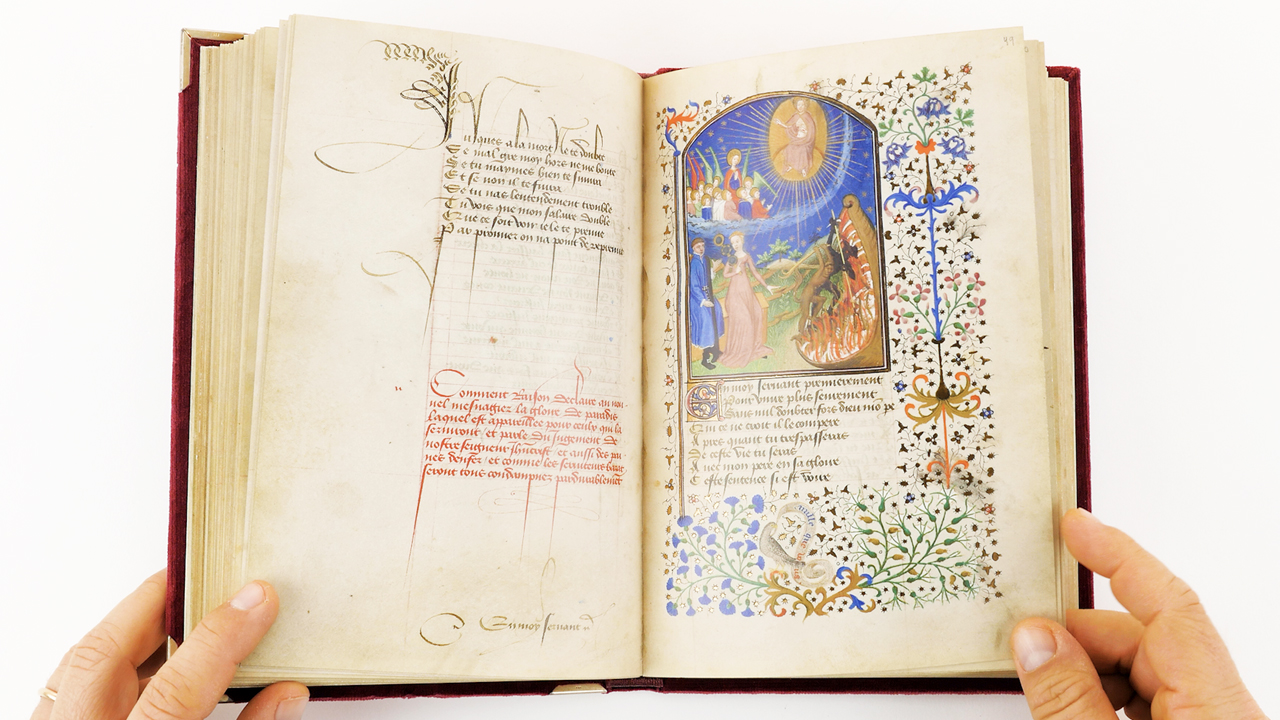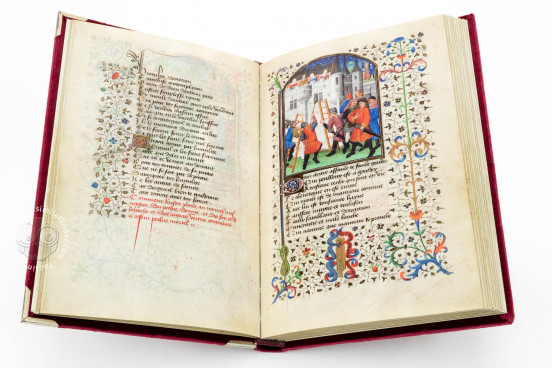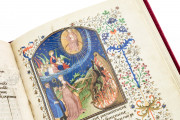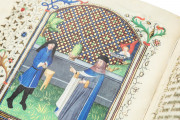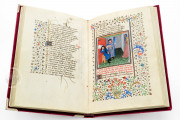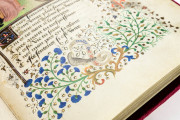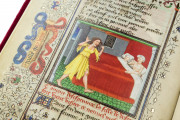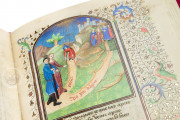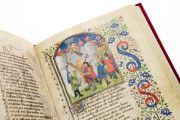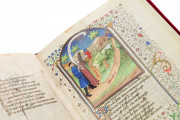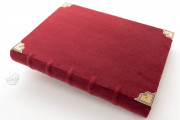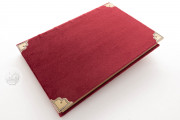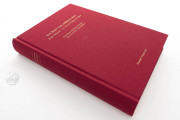Created in Paris around 1430, the Book of the Castle of Work is the only surviving illuminated manuscript of the Voie de povreté ou richesse ("Way of Poverty or Wealth"), a long allegorical poem by Jean (Jacques) Bruyant. The protagonist, a newly wedded man, is led to appreciate the value of work by a series of allegorical figures. The manuscript features forty-six large miniatures attributed to the Fastolf Master, each accompanied by a full painted border.
Bruyant composed the poem of 2,626 octosyllabic lines in rhyming couplets nearly a century before the manuscript was created. The protagonist, identified as the author, is led through his dream vision by male and female personifications of concepts including reason, want, necessity, suffering, and hunger.
A Master of the International Style
The Fastolf Master received his training in Paris in the workshop of the Bedford Master, and he worked successively in Paris, Rouen, and England. His strong interest in two-dimensional patterning and brilliant colors is a hallmark of the International Style in which he was trained.
The Fastolf Master illuminated the Book of the Castle of Work early in his career. In it, he displays his characteristic painting style marked by well-defined figures, illusionistically three-dimensional architectural settings, and stylized landscapes.
Close Collaboration
The illuminator and scribe (or someone directing them) made decisions as the manuscript was being designed about the subject and placement of the miniatures and the rubrics, which parallel the content of the paintings. Its pictorial program is, and always was, unique.
When practical, the miniatures were placed at the top of a page and given a curved top. From a half-page tall to occupying all but two lines of text, their height was determined as much by the coordination of text and image as by their subject.
Surprising Format
The manuscript is remarkable for presenting a secular poem in a book of small format written in long lines (a single column). In this period, vernacular poetry manuscripts usually had large pages with the text written in multiple columns and with miniatures of column width.
The Book of the Castle of Work appears at first glance more like a Christian prayer book than a manuscript of literature, with its irregularly placed miniatures that command the page on which they appear.
Gift of the Widener Family
We do not know for whom the manuscript was created, although that person's coat of arms and motto appear often in the painted borders. Another motif in some of the borders—a crenelated stone wall with a wooden gate—may also refer to the patron (unless it represents the Castle of Work).
The manuscript surfaced in the Paris book market in 1891, and it came into the possession of George Clifford Thomas, Jr. (1873-1932). In 1915, Joseph E. Widener (1872-1943) purchased it, and his children donated it to the Free Library in memory of their father.
We have 1 facsimile edition of the manuscript "Jacques Bruyant's Book of the Castle of Work": Buch vom Erfüllten Leben facsimile edition, published by Faksimile Verlag, 2005
Request Info / Price
